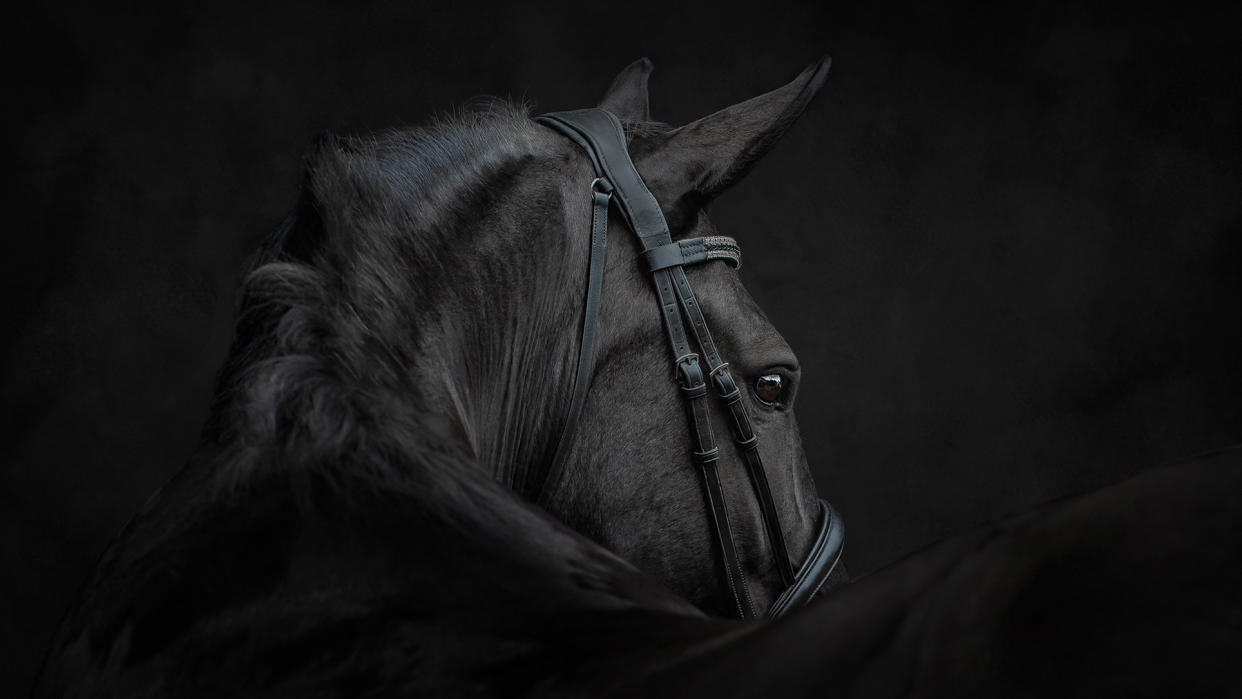"I don't use any external flash, this image is shot purely with natural light"

This award-winning photograph may look like it was sculpted using supplemental illumination – but it was, in fact, shot completely with natural light using a Nikon D750 and a Nikon 70-200mm f/2.8 lens (at 1/400sec, f/6.3, ISO640).
Titled Bandit, photographer Dawn Cotterell captured this stunning shot of a black horse standing inside an American-style barn building. She talks to us about how the photo was taken, and why it works.
1. Black in black
At first glance the picture appears black-and-white but, on closer inspection, it becomes clear that it also contains subtle shades of blue. This is shown in the horse’s bridle and mane, and adds depth to the image.
"With black horses, it can be hard to get that exposure right in-camera," says Dawn. "They often appear 'lost' within the background and have no defined edges. With the original black background I felt the image was too plain, so I wanted to add some texture. Colors didn’t look right, but choosing similar tones from the horse really pulled the image together."
2. Catchlight
The way light reflects in the eye is captivating and gives the subject a sense of liveliness and vibrancy. "The catchlight is straight from the camera and is from the sky behind me.
"Bandit was standing inside an American-style barn building, so I had full control over where all the light was coming from. I don't use any external flash, so this image is shot purely with natural light." The horse's coat reflects that light, bringing out intricate details that are emphasized by her choice of a monochromatic color scheme.
3. Striking pose
The positioning of the horse and the focus of the image work together for an engaging shot. "The hardest part of this type of image is the pose. Not every horse has the same flexibility and bend in its neck.
"I needed enough room in the stables for the horse to be comfortable, and then it's a matter of waiting to see how they carry their head as they turn. The owner is usually standing just out of the frame or crouched down behind the horse."
4. Vignette effect
"I wanted to create an overall moody-looking image with a sense of curiosity and wanting to know more about this beautiful horse," says Dawn. By adding a vignette effect in post-processing, the edges of the photo are gently darkened, emphasizing the atmosphere.
"The use of vignettes and radial filters is down to personal taste, but I love them! I like to use them for this type of image to draw the eye inwards, so it doesn’t float around and back out of the image."

This article originally appeared in Digital Photographer, a monthly magazine, and the kitbag essential for pros, enthusiasts, and amateurs alike!
Inside, you'll find practical guides, shooting tips, and techniques from working photographers, plus all the latest industry news.View Deal
Want to take excellent equine images? Check out the best cameras for wildlife photography and the best lenses for wildlife.

